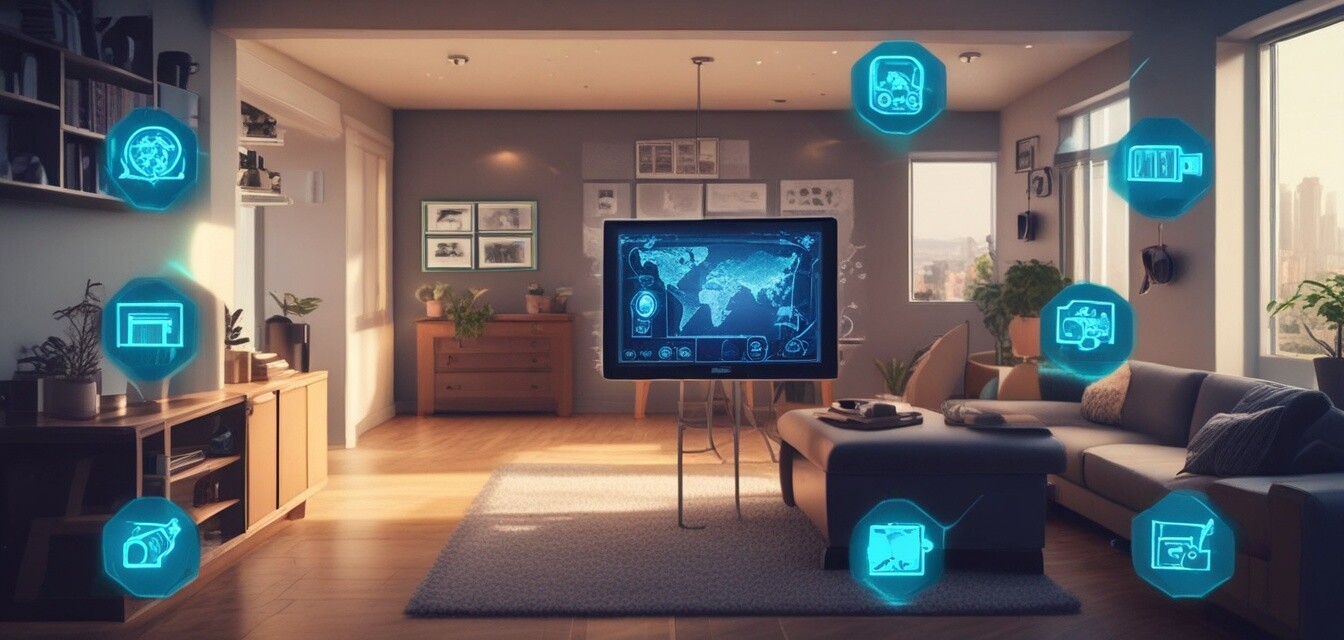
The role of augmented reality in home security
- Augmented reality (AR) creates immersive experiences for enhanced security.
- AR can integrate with existing security systems to provide real-time data.
- Interactive features of AR help users visualize security threats and monitor their property effectively.
- Advancements in AR technology are shaping the future of home security systems.
- Understanding AR integration can lead to better home protection strategies.
As technology continues to evolve, so do home security measures. One of the most exciting advancements is the integration of augmented reality (AR) into home security systems. This innovative approach not only enhances the safety of your home but also engages homeowners in a more interactive and effective way to monitor their properties. In this article, we will explore the various ways augmented reality technology is changing the landscape of home security.
What is augmented reality?
Augmented reality is a technology that overlays digital information, such as images or data, onto the real world through devices like smartphones, tablets, or AR glasses. This interaction creates an immersive experience, allowing users to engage with digital elements in their physical surroundings.
How augmented reality enhances home security
The application of AR in home security systems opens up a range of possibilities, including:
- Visual alerts and notifications
- Enhanced surveillance through real-time data visualization
- Interactive monitoring tools
- Integration with smart home devices
Visual alerts and notifications
AR can provide instant visual alerts to homeowners. For instance, when a security camera detects movement, users can receive a notification that appears in their AR device, showing them the exact location of the activity in their home. This feature allows for immediate responses to potential threats.
Enhanced surveillance through real-time data visualization
By integrating AR technology with existing security camera systems, homeowners can gain deeper insights into their property. Digital overlays can display camera feeds directly onto the real-world view, allowing users to zoom in on specific areas, track movement in real-time, and evaluate different angles without needing to switch multiple camera views.
Interactive monitoring tools
AR can transform the monitoring experience by providing interactive tools. For example, users can tap on different areas of their property in an AR interface to gather more information. They could view history logs, check camera status, or even activate specific alarms—all within a seamless AR environment.
Integration with smart home devices
The future of home security lies in the integration of various smart devices. AR can serve as the central hub for controlling your entire security system, easily allowing users to coordinate interactions between cameras, motion sensors, and alarms. For more on smart home integration, check our article on home security buying guides.
Future trends in augmented reality and home security
Considering the rapid advancements in AR technology, the future looks promising for home security. Here are some potential trends that could shape your home security experience:
| AR Trend | Description | Potential Impact |
|---|---|---|
| Real-time facial recognition | AR could use facial recognition to verify known visitors. | Reduce false alarms and enhance security confidence. |
| Virtual security assessments | AR can assist homeowners in identifying vulnerable spots in their property. | Proactive security measures through better planning. |
| Interactive home training systems | Homeowners may receive AR-guided tutorials for using their security systems. | Increased familiarity leading to better usage of security tools. |
Challenges of integrating augmented reality in home security
While the benefits of AR in home security are substantial, there are some challenges to consider:
Pros
- Enhanced real-time engagement with properties.
- Improved situational awareness.
- Interactive and user-friendly interfaces.
- Seamless integration with other smart devices.
Cons
- High initial investment in AR-compatible devices.
- Dependence on stable internet and power availability.
- Potential privacy concerns related to data usage.
- Learning curve for less tech-savvy users.
Conclusion
Augmented reality presents a unique opportunity for homeowners to enhance their security measures through immersive and interactive experiences. By integrating AR into existing security systems, you can achieve greater peace of mind and better protection for your loved ones. The future of home security is not just about surveillance; it's about interaction, engagement, and continuously adapting to new technologies. Stay ahead of the curve and explore the ever-evolving landscape of security technology in our latest articles on latest security technology trends.
